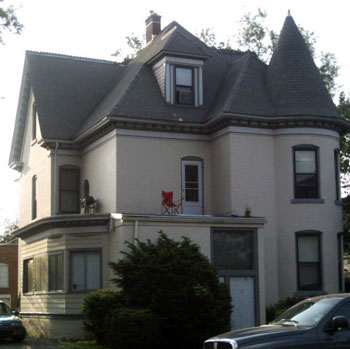In the Archives: Lit by Kerosene
Editor’s note: Laura Bien’s In the Archives column for The Chronicle appears monthly. Look for it around the end of every month or sometimes towards the beginning.
On a May evening in 1866, 15-year-old Ann Arborite Maria Benham got ready for bed in her Third Ward home, which also housed her cabinetmaker father Warren, her mother Rachel, and siblings George, Menora, and Alice.
Maria was a grammar school student at the Union School at Huron and State Streets, later the site of Ann Arbor High School and eventually renamed the Frieze Building. The school year was almost over, and the annual yearbook was about to be printed.
When it came out, Maria’s name had an asterisk.
Maria removed the glass chimney of her kerosene lamp and flipped her apron at the flame to puff it out. Instead, the lamp exploded, enveloping her in flames. Maria ran downstairs towards the cistern. Someone spotted her and threw his overcoat over her flaming body, suffocating the fire.
Maria had severe burns over her entire body. After an agonizing night, she died at 6 a.m. She would have been sixteen that August.
Her story, originally reported by the Ann Arbor Argus, was reprinted by papers in Hillsdale, Marshall, and elsewhere in the state. Unfortunately, it was a familiar tale. Kerosene lamp explosions were tragically common in 19th-century Michigan. It seems odd, because kerosene is a relatively stable, non-explosive fuel, far less volatile than such lighter petroleum products as gasoline or naptha. A lit match thrown into a cup of room-temperature kerosene will simply go out.
Maria had been born in 1850, around the dawn of the domestic oil industry. Many unscrupulous oil refiners of that era pursued profits at the cost of lives like hers. [Full Story]





